From April 11, 2024 to May 16, 2024
Galerie Tanit, Mar Mikhael, Beirut, Lebanon
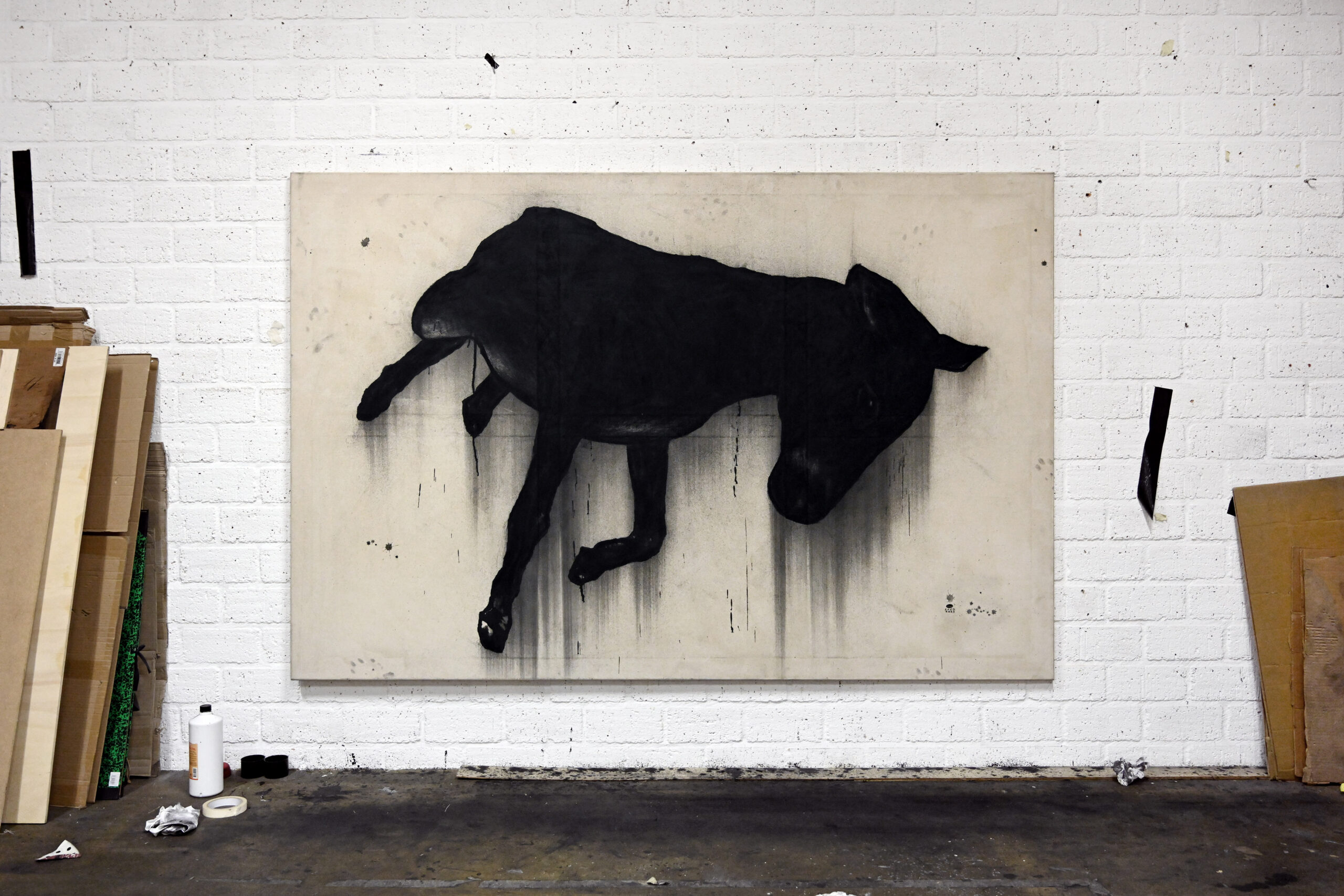
Donkeys Love Rest Too, Charcoal and Ink on Canvas, 140 cm x 210 cm, 2023 (View from Sadik's Studio)
For thousands of years donkeys have assisted humans in the ploughing of fields, transportation of people and goods, and other forms of powered labour, such as in construction, the grinding of flour, or the pressing of olive oil. They are humans’ oldest domesticated animal, which makes human history and donkey history inextricably intertwined. And yet donkeys are still perceived as stupid or stubborn and suffer mistreatment and abuse. In his solo exhibition Charcoal, Ink and a Donkey Iraqi-Dutch artist Sadik Kwaish Alfraji offers a heartfelt corrective by celebrating and honouring this animal.
Alfraji’s two main references for this new body of work draw in equal manner on growing up in Madinat al-Thawra, an impoverished suburb of Baghdad, as it does on George Orwell’s political satire Animal Farm (1945). The artist seamlessly blends childhood memories of being surrounded by donkeys with Orwell’s anthropomorphised depiction of the donkey as a sceptical and aloof observer who refuses to take sides in political power play. In his large unprepared canvases with ink and charcoal, Alfraji studies the donkey in a variety of angles and poses — frontal, profile, resting, standing, kicking its hind legs — as if he wishes to glean snippets of wisdom from its form.
In these works, the donkey is presented against an empty background, as if to emphasise a “donkeyness” that is not rooted in servitude to humans. While these canvases combine a certain playfulness with melancholia and speak to generic ideas of donkey representation, they also reframe the donkey as a working animal. Social commentary and the politics of class seep in through the Orwellian quotes and by Alfraji’s decision to show animals that are not at work but instead subtly and quietly exercise their own agency. Conversely, the series of small and stylistically rougher Indian ink drawings A Donkey in my Studio, often show a beast of burden, carrying heavy loads. There is a tension between the canvases and the drawings that remains unresolved.
Perhaps Alfraji’s most explicit statement is articulated in the short stop motion animation A Donkey and the canvas A Selfie with G. Orwell’s Donkey. In the former we see the donkey walking, the sounds of its footsteps amplified, seemingly aimless with its destination unknown. It is just always moving forward, regardless of the odds. A Selfie with G. Orwell’s Donkey portrays the artist together with a donkey on equal footing, rejecting the novel’s most famous sentence: “All animals are equal. But some animals are more equal than others.” This proves camaraderie between human and nonhuman, but most importantly, recognition. Literary scholars have likened the role of the donkey in Animal Farm to Orwell’s alter ego, a sagacious sceptic who witnesses and records life. “The donkey,” Alfraji shares, “is me.” In this declaration he reveals much about his artistic practice and how he views the artist’s role in society, namely as a figure who witnesses and records.
-Nat Muller
Artists
Image Gallery
Sadik Kwaish Alfarji
A Selfie With G. Orwell’s Donkey
2023
Charcoal and Ink on Canvas
115 cm x 115 cm
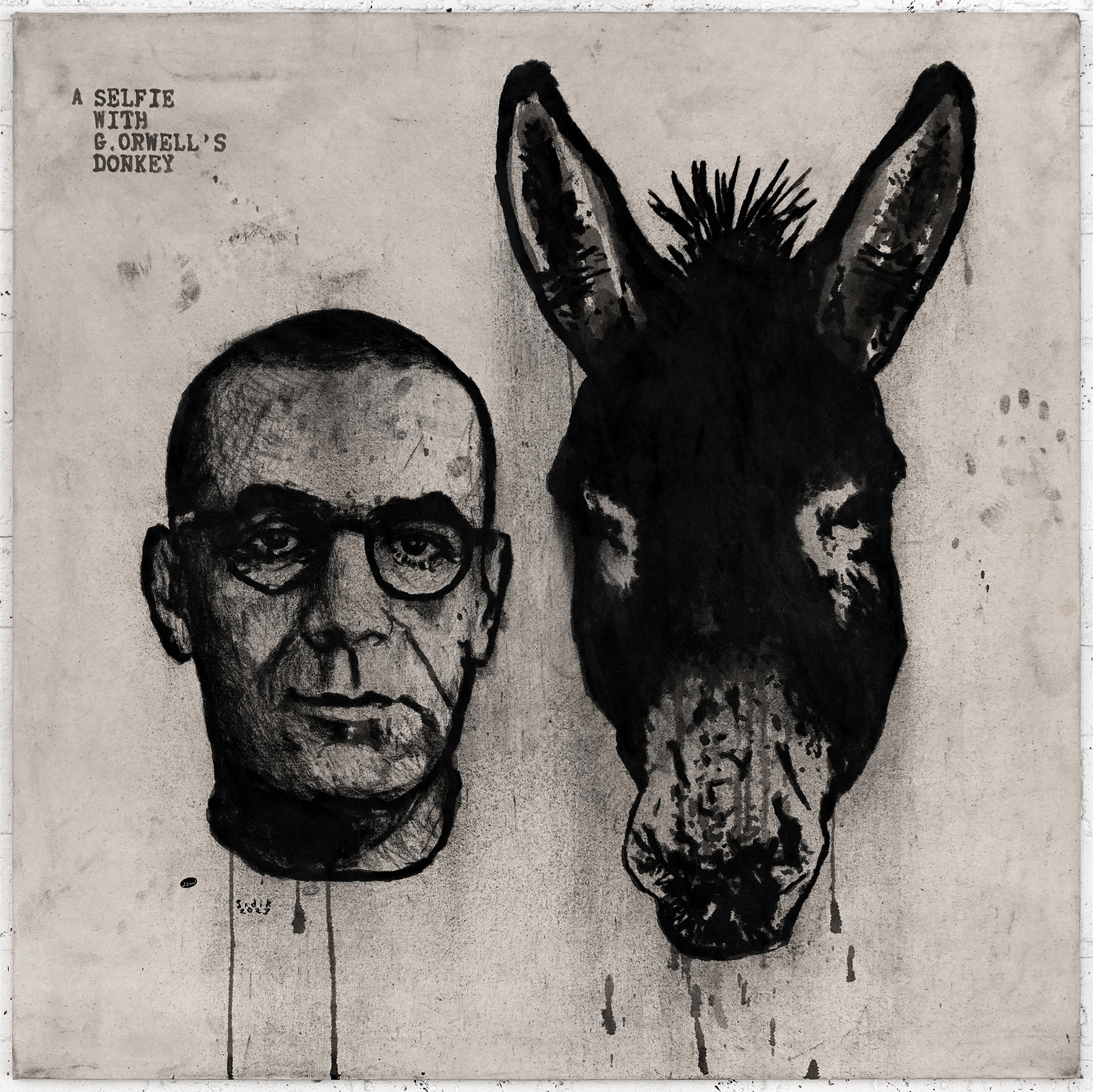
Sadik Kwaish Alfraji
Charcoal, Ink and a Donkey
Opening View
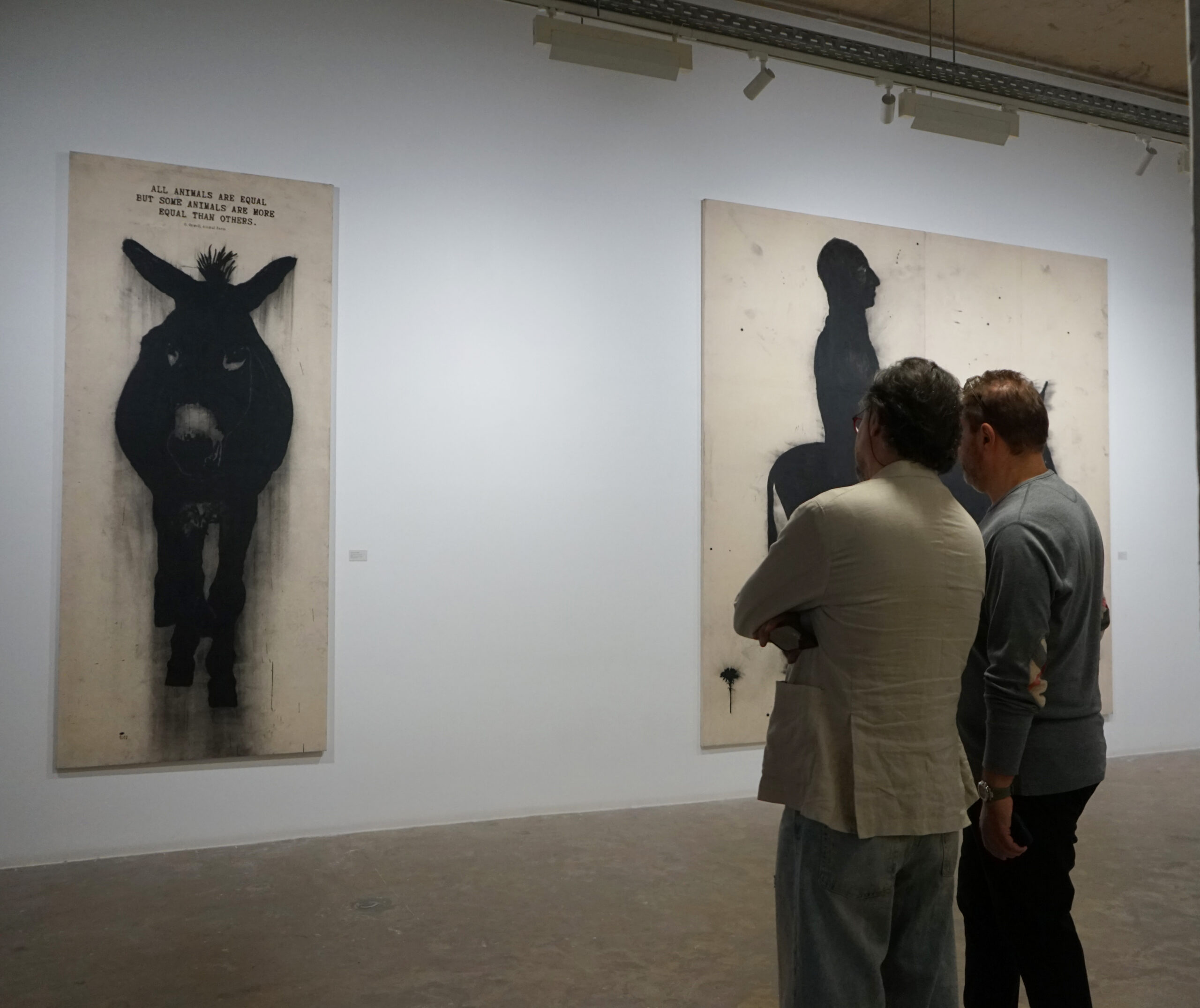
Sadik Kwaish Alfraji
Charcoal, Ink and a Donkey
Exhibition View
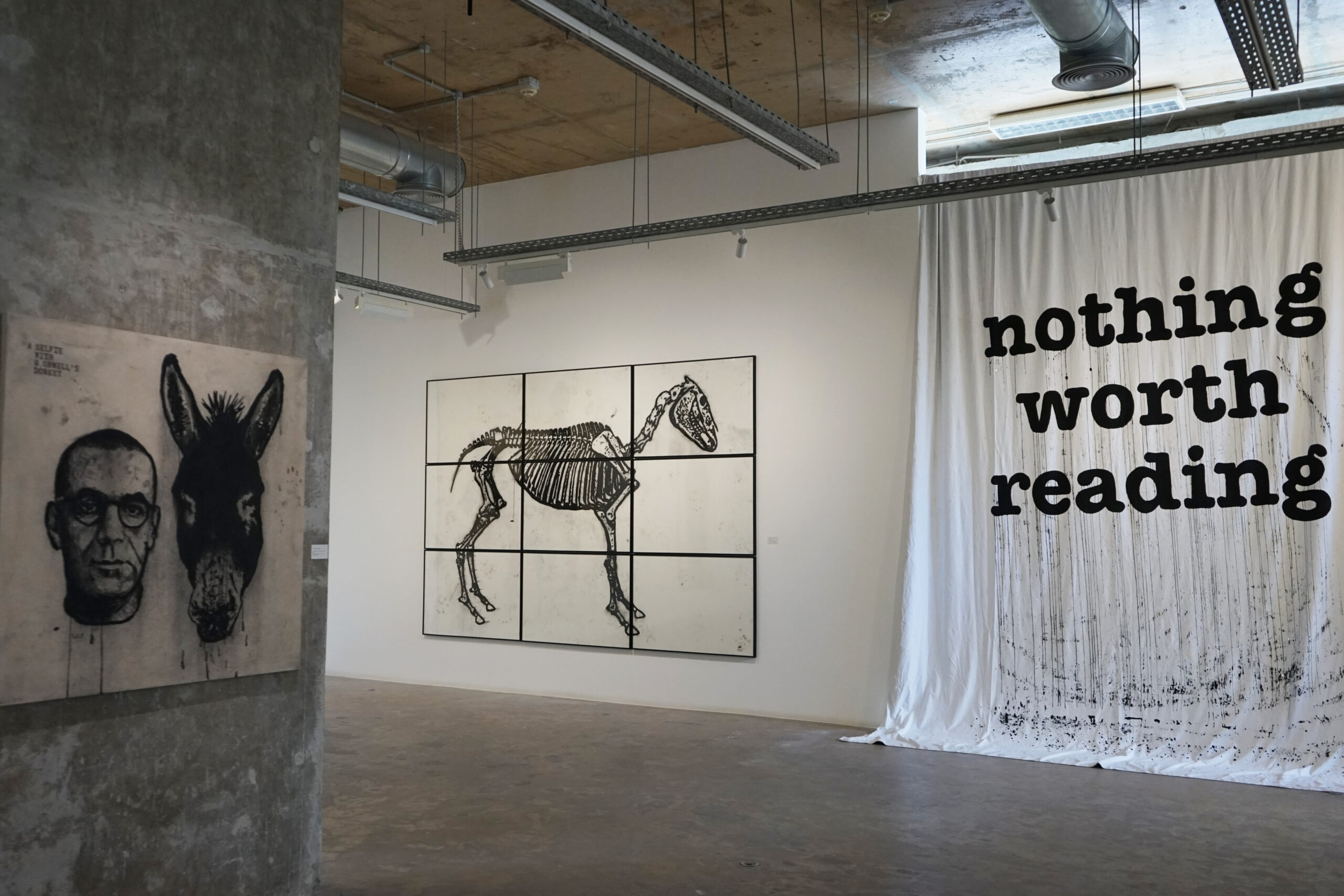
Sadik Kwaish Alfraji
All Animals Are Equal, But..
2023
Charcoal and Ink on Canvas
113 cm x 270 cm
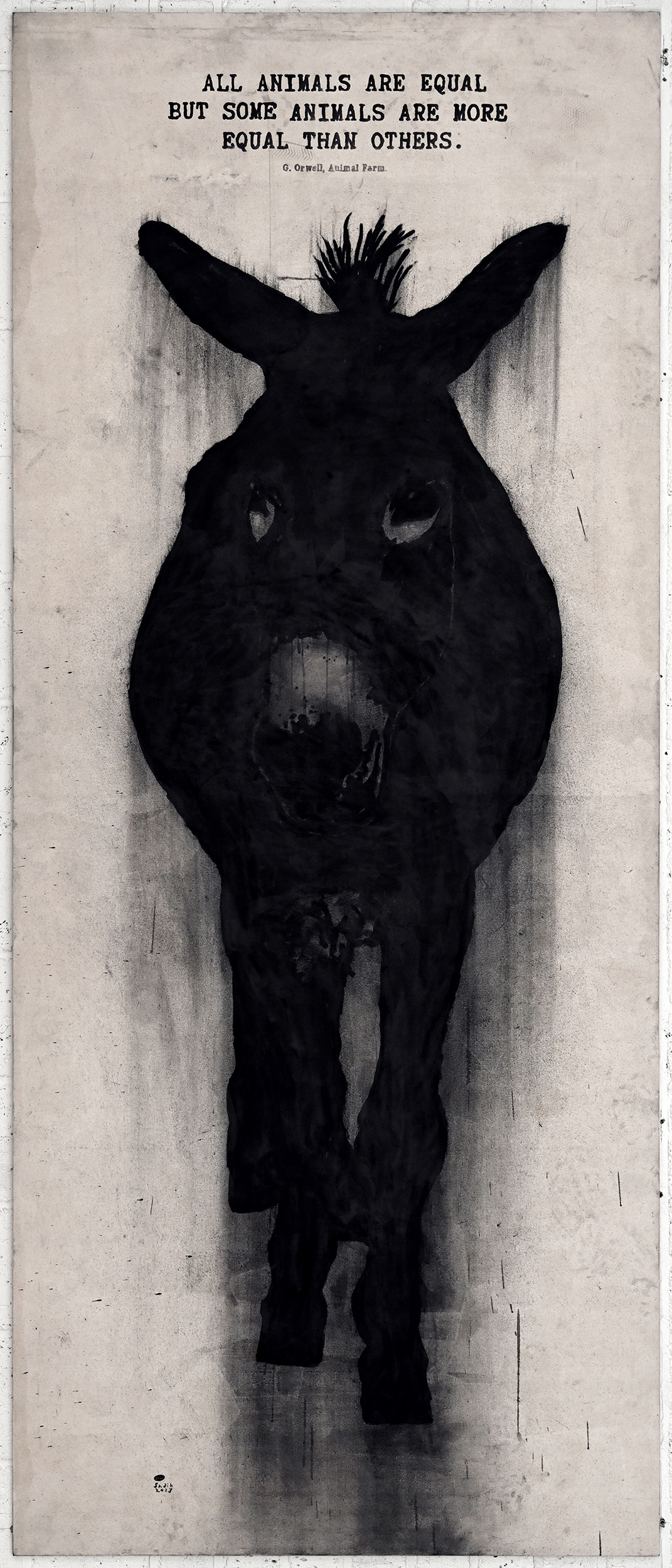
Sadik Kwaish Alfraji
Charcoal, Ink and a Donkey
Exhibition View
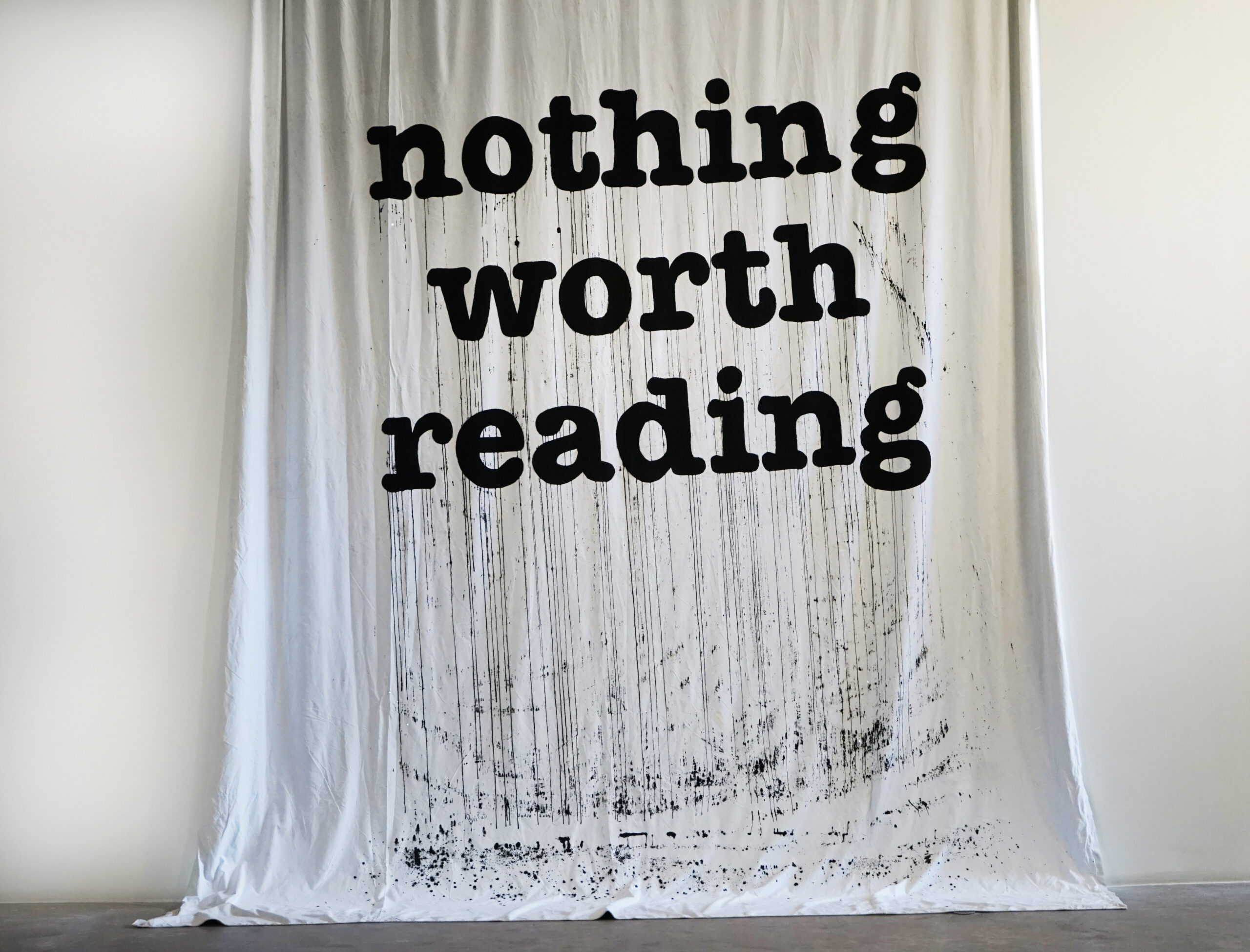
Sadik Kwaish Alfraji
Donkeys Think Too
2023
Charcoal and Ink on Canvas
145 cm x 120 cm
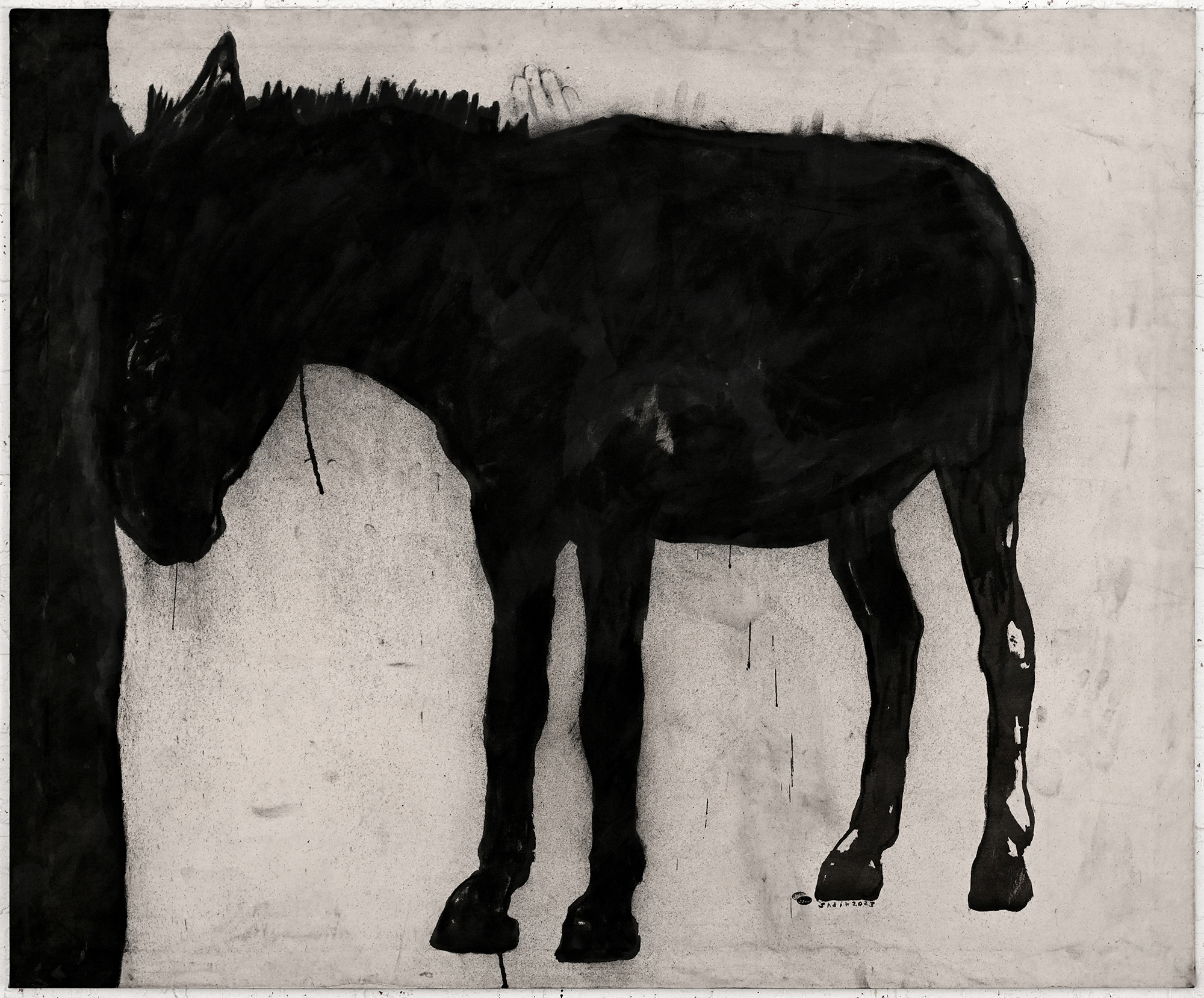
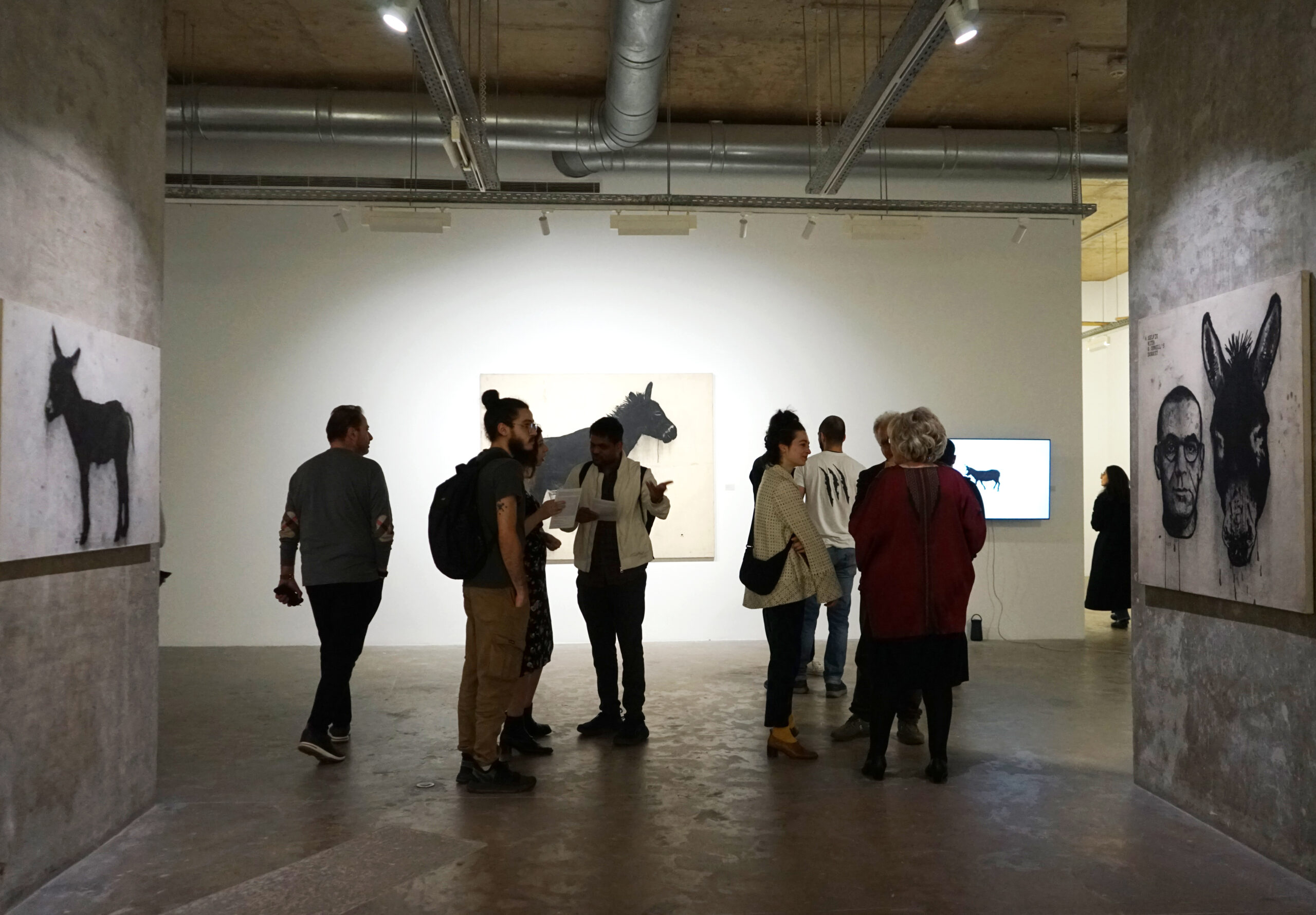
Sadik Kwaish Alfraji
Charcoal, Ink and a Donkey
Opening View

Sadik Kwaish Alfraji
Charcoal, Ink and a Donkey
Exhibition View
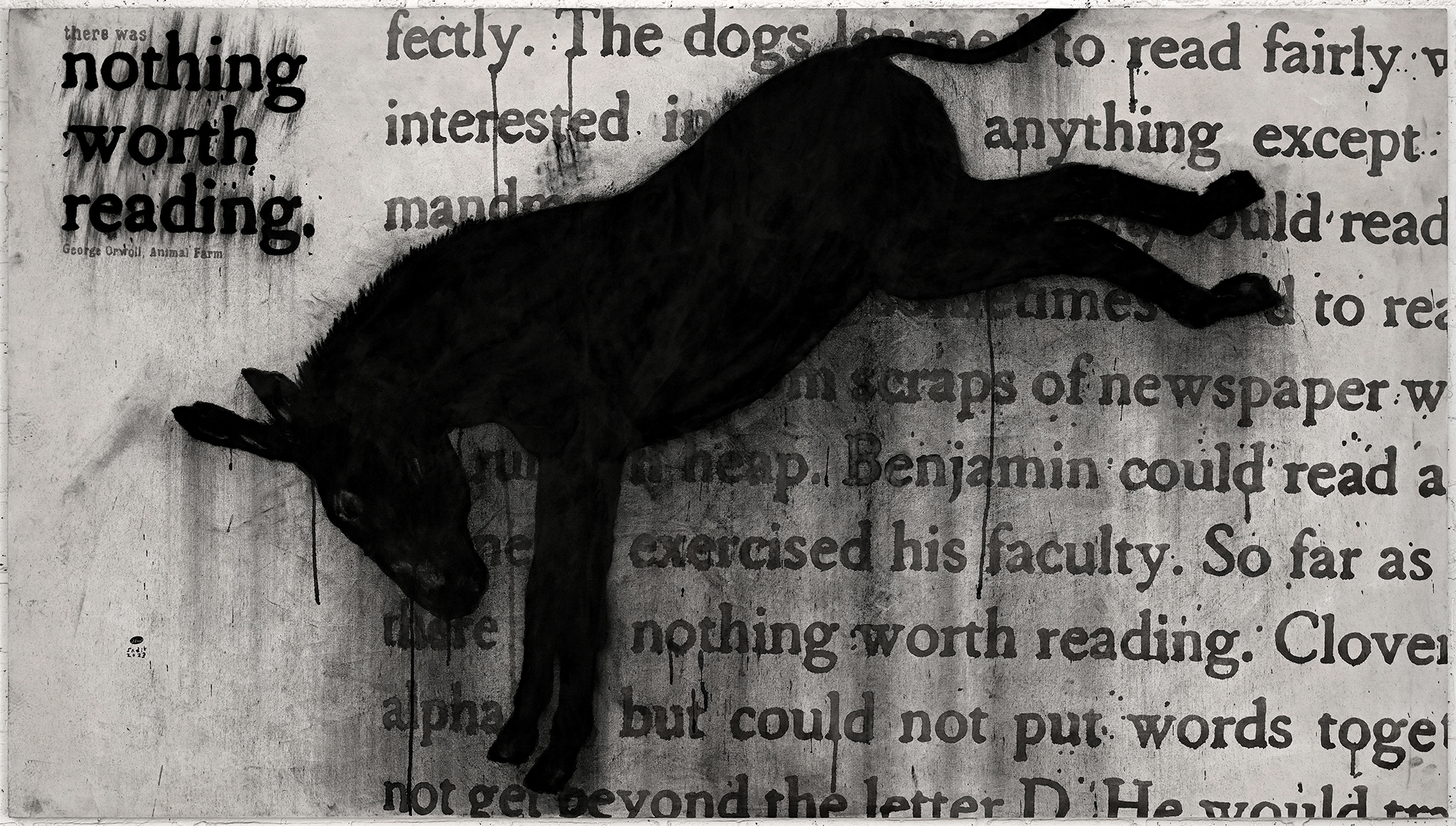
Sadik Kwaish Alfraji
Nothing Worth Reading
2023
Charcoal and Ink on Canvas
200 cm x 112 cm

Sadik Kwaish Alfraji
Charcoal, Ink and a Donkey
Exhibition View
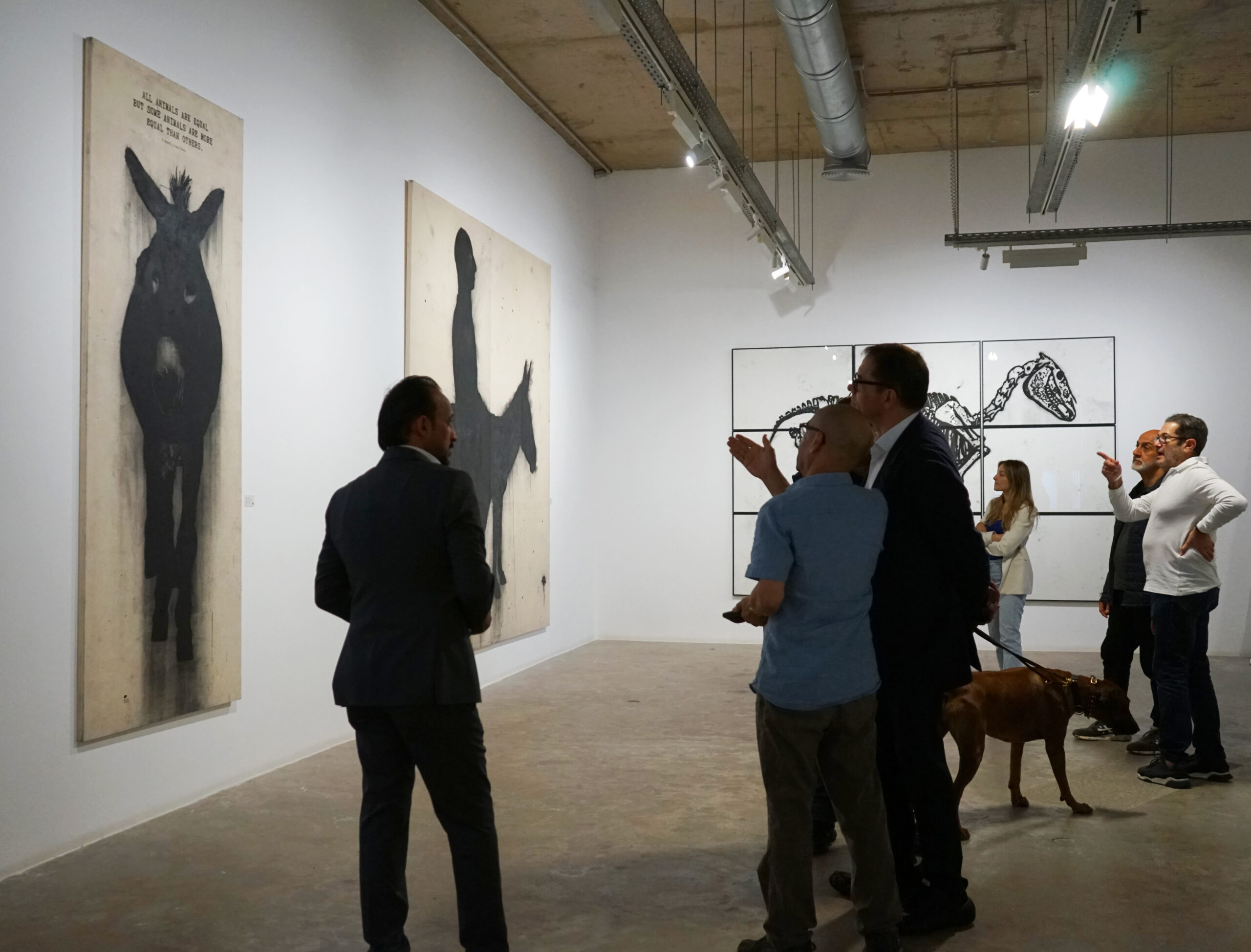
Sadik Kwaish Alfraji
Charcoal, Ink and a Donkey
Opening View
Subscribe to our newsletter for ongoing updates on our artists and exhibitions
